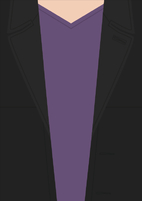Legion of Super-Heroes:
Teenage Revolution
Writer: Mark Waid
Penciller: Barry Kitson
Additional Pencils: Leonard Kirk, Dave Gibbons, Scott Iwahashi
Inkers: Art Thibert, Mick Gray, Barry Kitson, James Pascoe, Drew Geraci, Scott Iwahashi
Colorists: Chris Blythe, Paul Mounts, Dave McCaig
Letterers: Phil Balsman, Jared K. Fletcher, Pat Brosseau, Rob Leigh
This is the new Legion of Super-Heroes. In the past, the Legion of Super-Heroes was a group of teenage superheroes from the future. This version, the third since the group was introduced in
Adventure Comics #247 back in 1954, is something more: they are revolutionaries. They don't want to beat up bad guys (or they don't
only want to beat up bad guys), they want to beat up the system itself. There are seventeen Legionnaires on the "core" team-- but they are only the vanguard of 75,000-member youth movement from dozens of planets across the galaxy.
 |
| from Legion of Super-Heroes vol. 5 #1 (art by Barry Kitson & Mick Gray) |
The idea of superheroes as revolutionaries isn't a new one. I would argue that it goes back the genre's ur-text,
Action Comics #1 in 1938. Superman in that first story doesn't fight Lex Luthor: he fights war profiteers. And in later stories he tackles other aspects of the United States' economy and social structure, like slumlords and people fixing college football games and unsafe driving conditions. (Okay, and a leaking dam.) This doesn't last, as in
Action Comics #13 it starts off about a taxi driver protection racket, but ends up being about the Ultra-Humanite, introducing the first superhero to his first supervillain.
But the idea that the superhero is a revolutionary figure recurs throughout the genre's history, and various creators take it on in various ways: Dennis O'Neill and Neal Adams in
Green Lantern/Green Arrow (1970-72), Warren Ellis and Bryan Hitch in
The Authority (1999-2000), Joe Kelly in
Action Comics #775: "What’s so funny about Truth, Justice, & The American Way?" (2001), Mark Millar in
Superman: Red Son (2003), and Paul Pope in
Batman: Year 100 and Other Tales (1998-2006). Alan Moore has taken on the idea repeatedly in his comics work, including in
Miracleman (1982-89),
Watchmen (1986-87), and
V for Vendetta (1982-89). More on him later, though. I wouldn't suggest that revolution is the only project of the superhero genre (
Amazing Fantasy #15, the debut of Spider-Man, captures a whole different part of it), but it is an important part of it.
If you know anything about the comics I listed, it's that they're excellent, but mostly dark, bloody, and dour.
Teenage Revolution shows that a revolutionary superhero comic does not have to be like that. The Legion is bright and fun, rebelling against a future that's forgotten how to enjoy itself, where people communicate only via screens (even when in the same room), everyone goes outside completely bundled up, and children's locations are monitored at all times for their safety.
 |
| from Teen Titans/Legion Special #1 (art by Barry Kitson) |
The teens in the Legion stand for a brighter, more exciting time, and they access this through-- in a sort of metatextual twist that's never really explained-- comic books published by DC Comics. They have spinner racks in Legion HQ:
 |
| from Legion of Super-Heroes vol. 5 #1 (art by Barry Kitson & Mick Gray) |
...quiz each other on their DC Comics trivia:
 |
| from Legion of Super-Heroes vol. 5 #6 (art by Barry Kitson & Art Thibert) |
...and even use them as a guide to what "dates" used to be like:
 |
| from Legion of Super-Heroes vol. 5 #3 (art by Barry Kitson & Art Thibert) |
The superheroes of the twentieth and twenty-first centuries are a key part of the inspirations of the Legionnaires, as is reflected in their code names:
  |
| from Legion of Super-Heroes vol. 5 #1 (art by Barry Kitson & Mick Gray) |
But the parameters of the Legion's conflict with the wider society of the United Planets is often defined vaguely. The Legion doesn't want kids (or "underagers," as they are called) to have their locations monitored, but other than that, what are they fighting for? And how are they fighting for it? The comic skirts around these issues, not always willing to show the violence that comes with revolution. Often throughout the series, an external threat ends up diverting the Legion's attention, and their violence is directed against that.
How revolutionaries articulate violence against their own society is a key question in stories of revolution, I think. In his book
From Utopia to Apocalypse: Science Fiction and the Politics of Catastrophe (2010), Peter Y. Paik argues that most would-be revolutionaries, and fiction about revolutionaries, flinches from these issues. But Paik praises Alan Moore's works (
Miracleman,
Watchmen, and
V for Vendetta are all discussed) as being among those that examine this difficulty thoroughly. Revolutionary change requires violence, he says, and though the moral cost is too high to bear, but "The grievous price of achieving utopia thus ceases to be terrible once
Homo sapiens reaches the stage at which it feels free to shrug off as unduly burdensome the moral reservations entailed by the sacrifices that have been committed for the sake of advancing the progress of history."
How does one become able to "shrug"? How do you reach the point where you can say, "Killing all these people was okay because it advanced the progress of history"? Paik's analysis of
Watchmen shows how the superhero Ozymandias is one such shrugger.
For the most part, Mark Waid and Barry Kitson's
Legion of Super-Heroes avoids these issues. Things rarely get violent between them and the United Planets. (The first panel above refers to one such moment, where the Science Police tried to bulldoze Legion HQ. But the Legion's followers surrounded it and stopped it from happening with their bodies, and no one was hurt: there were no sacrifices.) I'll talk about one such moment when I get to the third volume.
But for now, the very first issue actually has one of the series' most protracted engagements with the idea of revolutionary violence. In this issue, the Legion is summoned to the planet Lallor, which is outside the United Planets, but allied to it. The Legion has been organizing underagers on Lallor into a political majority. It's a little unclear to me exactly what the backstory is. At one point, the leader of the Legion, Cosmic Boy, describes it as an "armed adult rebellion," implying the adults are rebelling against the underagers, but here, a dying Lallor underager tells Invisible Kid:
 |
| from Legion of Super-Heroes vol. 5 #1 (art by Barry Kitson & Mick Gray) |
...implying that the adults were in control. Either way, there's some kind of armed conflict between the adults on Lallor and the Legion-affiliated underagers. Because the alliance between the United Planets and the government of Lallor, the U.P. government asks the Legion
not to intervene against the Lallor government.
The Legionnaires, of course, ignore this edict. They justify their intervention-- they shrug-- in terms of preventing a larger outbreak of violence. Cosmic Boy argues that a number of planets are edging toward war:
 |
| from Legion of Super-Heroes vol. 5 #1 (art by Barry Kitson & Mick Gray) |
...and in a war, it's the young who will fight it on behalf of their elders. That it's the young who pay for decisions made by adults in which they have no say is a recurrent social criticism raised by the Legionnaires throughout the series. Here, the Legion engages in violence to
prevent the larger violence of a full-scale war, knowing that the young, the disenfranchised will pay the most if there is one.
The United Planets' dithering is often portrayed as the biggest threat to peace. Because the United Planets is so big and so socially conservative, it is not quick to act. Because the Legion exists outside the government, they can act quickly and decisively to cut situations off before they escalate into larger outbreaks of violence. Thus, Cosmic Boy authorizes Legion involvement on Lallor.
 |
| from Legion of Super-Heroes vol. 5 #1 (art by Barry Kitson & Mick Gray) |
But this is a rare moment in the series. The youth movement that is the Legion of Super-Heroes never has direct, violent confrontations with the social order of the United Planets, something that's hard to imagine would be the case if this comic had been written ten years later, after Occupy Wall Street and Black Lives Matter. Most of the time, the Legion doesn't have to shrug at all, and it feels like some of the potential of this version of the Legion has been left on the table as a result.
That's not to say there isn't a lot to like about the "threeboot" Legion, but this essay is focused on one particular aspect, not leaving me with much room to mention how much I liked Barry Kitson's clean art, the pervasive feeling of optimism, the clever sci-fi ideas, and especially the character of Dream Girl, who is definitely my favorite in this incarnation. Like the best reboots, Waid and Kitson's take is at least as interesting as what it's replacing, and the differences are more than interesting enough to justify the undertaking.









































